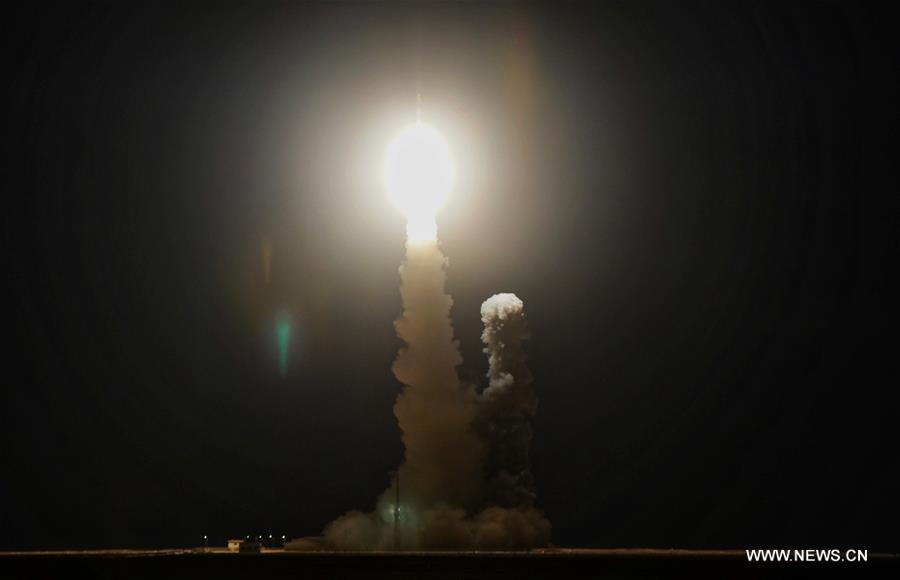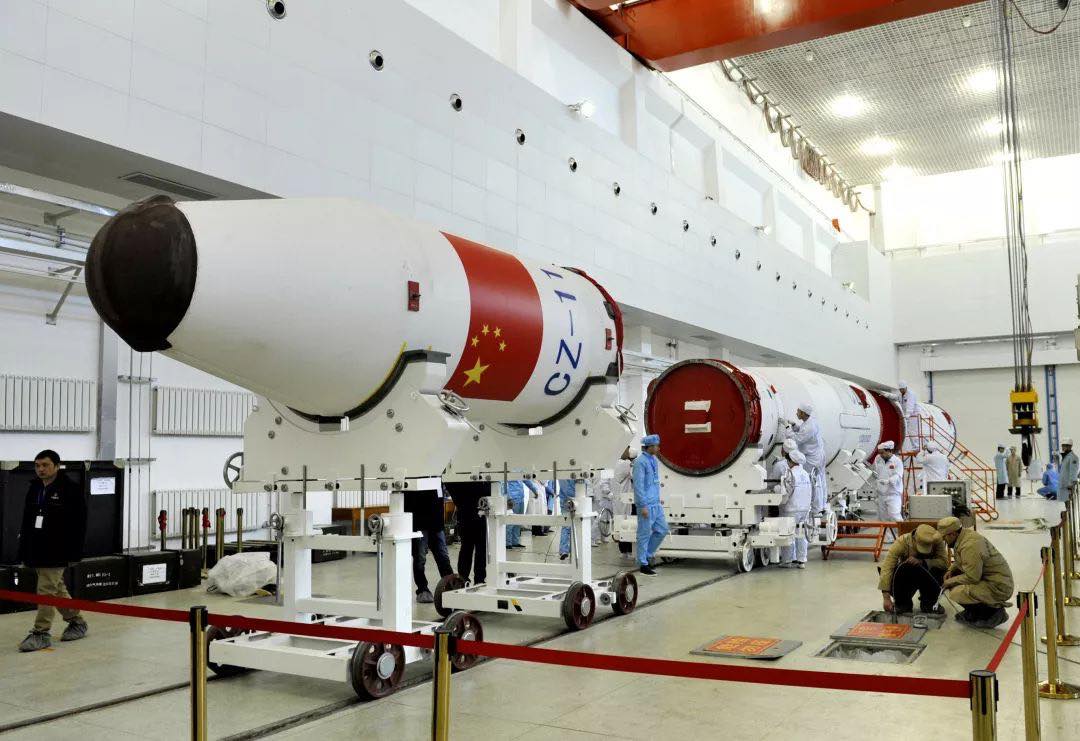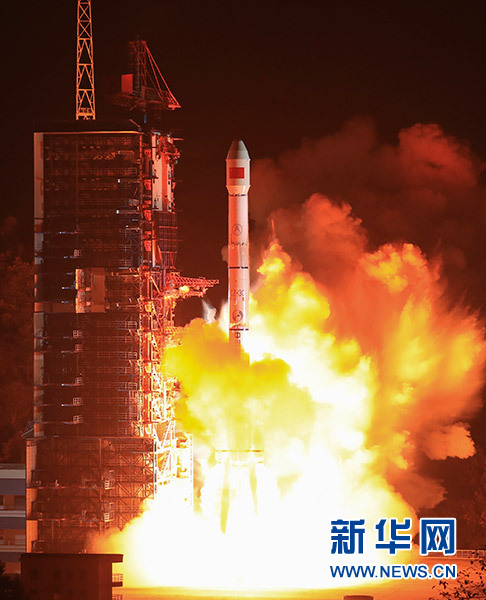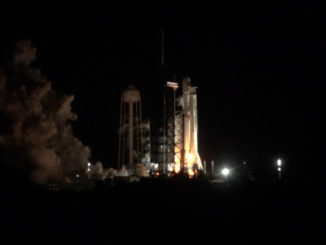
China’s space program is sprinting toward the end of the year by extending the country’s record-breaking launch rate, with two more space missions lifting off in the last week carrying a pathfinder for a planned constellation of Internet satellites and a mysterious payload heading for geostationary orbit. At least one more Long March rocket is set to lift off Saturday to close out 2018.
With the two most recent Chinese rocket flights, the country has launched 38 missions to Earth orbit or beyond this year, shattering a record for Chinese launch activity previously set in 2016, when China conducted 22 space launches.
All but one of China’s 38 space launches this year have been successful — the sole exception was the maiden flight of a new commercial launcher developed by Chinese startup LandSpace.
China’s 37th launch of the year occurred Dec. 21, when a solid-fueled Long March 11 booster took off from the Jiuquan space center in northwest China with a test satellite for a planned fleet of orbiting relay platforms beaming broadband Internet services down to Earth.
The tech demo satellite for the Hongyun broadband project launched aboard the four-stage, 68-foot (21-meter) tall Long March 11 rocket at 2351 GMT (6:51 p.m. EST) on Dec. 21. Liftoff occurred at 7:51 a.m. Beijing time Dec. 22, shortly before sunrise at the Jiuquan launch base.
China’s broadband network, named Hongyun, may eventually consist of 156 satellites. The pilot mission launched Dec. 21 will validate critical technologies for the project, including a multi-beam millimeter-wave phased array communication antenna, according to China’s state-run Xinhua news agency. Four more Hongyun satellites could be launched by 2020 to kick-start the project, which the China Aerospace Science and Industry Corp. — a government-owned entity known by the acronym CASIC — told Xinhua will provide global Internet connectivity, with an emphasis on connecting the population residing in China’s remote regions.
Xinhua said the launch of the test satellite Dec. 21 “signifies China’s substantial progress” in realizing a large broadband satellite constellation. Several Western companies are pursuing similar space-based broadband networks, such as SpaceX, OneWeb and Telesat.

The Long March 11 rocket placed the Hongyun test satellite into a nearly circular orbit averaging around 663 miles (1,067 kilometers) above Earth at an inclination of 99.9 degrees, according to U.S. military tracking data. The China Academy of Launch Vehicle Technology said it completed preparations for the launch in less than six months after the contract agreement to send the Hongyun test satellite into orbit.
The launch Dec. 21 marked the fifth flight of a Long March 11 rocket since its maiden mission in September 2015, and the third Long March 11 flight this year. Another Long March 11 launch carrying multiple satellites into orbit is planned in January.
Developed by the China Academy of Launch Vehicle Technology, or CALT, the Long March 11 measures nearly 7 feet (2 meters) in diameter and can haul up to 770 pounds (350 kilograms) of payload to a 435-mile-high (700-kilometer) sun-synchronous orbit. Other solid-fueled rockets sized to loft small satellites have debuted in China in recent years, including the Kuaizhou designed by the China Aerospace Science & Industry Corp., a different unit in China’s state-run defense and aerospace apparatus from CALT.
Both of the new rocket types blast off from a wheeled mobile transporter.
Several commercial rocket companies are also working on new smallsat launcher designs, including the startup LandSpace, which conducted its first orbital launch attempt in October.
China followed the Dec. 21 launch of the Long March 11 booster with the blastoff of a Long March 3C rocket from the Xichang space center at 1653 GMT (11:53 a.m. EST) Dec. 24.
The launch marked the 16th flight of a Long March 3C rocket, a variant of the Long March 3 family with two strap-on liquid-fueled engines. The more powerful Long March 3B, which flies more often, features four boosters.

The Long March 3C lifted off at 12:53 a.m. Beijing time on Dec. 25.
The Chinese rocket-builder CALT said the launcher delivered its payload to a geostationary transfer orbit, and U.S. military data indicated the satellite was deployed in an orbit ranging between 112 miles (180 kilometers) and 22,234 miles (35,783 kilometers), with an inclination of 28.5 degrees to the equator.
CALT and the Xinhua agency identified the payload as a communications technology test satellite, known as TJS 3. No other information about the spacecraft or its mission were released by Chinese officials, raising suspicions that it could be a military satellite.
China plans at least one more launch this year
While China typically does not publicize the dates and times of space missions in advance, airspace warnings for pilots often offer several days of notice ahead of a launch.
One such notice to pilots suggests a launch is scheduled Saturday from the Jiuquan launch site in the Gobi Desert, with a liftoff likely set for around 0800 GMT (3 a.m. EST; 4 p.m. Beijing time).
Analysts believe the launch will likely use a Long March 2D rocket to deliver the first satellite in a different Chinese broadband network — named Hongyan — to orbit for a series of engineering tests and demonstrations.
Email the author.
Follow Stephen Clark on Twitter: @StephenClark1.



